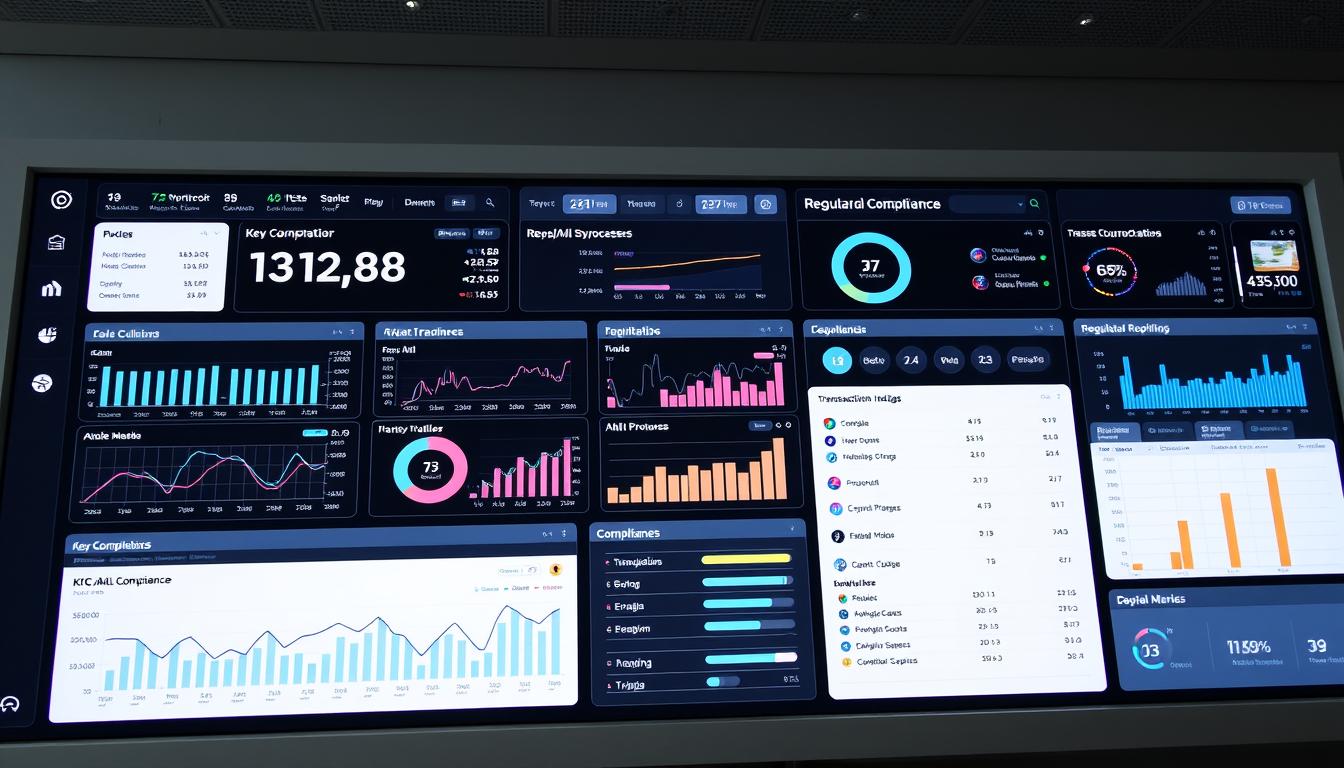Now Reading: Blockchain for Remittances: Low Cost Transfers Explained
- 01
Blockchain for Remittances: Low Cost Transfers Explained
Blockchain for Remittances: Low Cost Transfers Explained

Sending funds across borders is a vital need for millions. Traditional systems for these international payments often create significant hurdles. They can be slow, expensive, and lack transparency.
This friction impacts individuals and businesses that depend on moving money quickly and reliably. A new digital approach is changing the landscape. Blockchain technology offers a powerful alternative to outdated methods.
It addresses the core issue of high cost associated with conventional payments. The goal is to make financial services more accessible to everyone, everywhere. This innovation is not just theoretical; it’s already processing vast sums globally.
This guide will explore how blockchain-based systems work for these payments. We will look at the mechanics, benefits, and real-world impact. Understanding this shift is key to grasping the future of global finance.
Key Takeaways
- Traditional international money movement systems are often slow and expensive.
- Digital technology provides a modern solution to these challenges.
- The focus is on reducing fees and increasing transaction speed.
- This innovation aims to improve financial access for underserved populations.
- Real-world applications are already demonstrating significant success.
- Understanding this shift is crucial for the future of global finance.
Introduction: Transforming Cross-Border Payments
A quiet financial transformation is underway, with digital payment methods reshaping how businesses operate internationally. The supply of stablecoins has exploded from $5 billion to $305 billion in just five years. This growth signals unprecedented adoption in financial technology.
During 2024, these digital assets processed over $32 trillion in total transaction volume. Approximately $5.7 trillion was specifically for cross-border payments. This demonstrates the technology’s move into mainstream commercial use.
The global market for international money transfers is projected to reach $290 trillion by 2030. This creates massive opportunities for innovative solutions. Companies from Tesla to small service providers are integrating blockchain capabilities.
Adoption is driven by practical business needs rather than speculation. Faster settlement and better transparency are key drivers. Modern payment partners enable businesses to leverage blockchain benefits without technical expertise.
| Feature | Traditional Systems | Digital Payment Systems |
|---|---|---|
| Settlement Time | 3-5 business days | Near-instant |
| Transaction Cost | High fees (3-7%) | Significantly lower |
| Transparency | Limited visibility | Full transaction tracking |
| Accessibility | Banking hours limited | 24/7 availability |
This shift represents a fundamental change in how we approach international commerce. The data confirms that digital payments are no longer experimental. They offer tangible advantages for cross-border payments that businesses cannot ignore.
The Evolution of Remittance Technology
Remittance systems have evolved dramatically from physical cash exchanges to sophisticated electronic networks. Today, nearly all international money transfers travel over electronic payment rails rather than physical transportation.
From Traditional Wires to Digital Assets
Traditional payment systems like SWIFT require multiple intermediary banks to facilitate international transfers. Each bank adds processing time, fees, and potential failure points to the transaction chain.
This correspondent banking infrastructure creates significant delays. Moving funds in and out of emerging markets can take 3-5 business days. The US-Mexico corridor processed $64.7 billion in 2024, showing the economic importance of these payments.

Advancements in Payment Rails and Infrastructure
Digital-first operators began disrupting traditional banking models. They used prefunded accounts and payment card networks to reduce costs and accelerate transfers.
This infrastructure advancement represents a fundamental upgrade over existing payment rails. Modern systems offer near-instant settlements compared to traditional delays. The evolution prepares users for even more efficient digital assets.
Understanding Blockchain Technology in Payments
Imagine a global ledger that is not stored in one location but is simultaneously maintained by thousands of computers. This shared digital record creates identical copies of transaction data worldwide. It eliminates the single point of failure found in conventional banking infrastructure.

What Is Blockchain?
This technology functions as a distributed database. No single organization acts as a gatekeeper for the network. This means payments can be sent directly between parties without central approval.
The system operates continuously, 24 hours a day, 365 days a year. There are no business hours, holidays, or geographic restrictions. This provides unparalleled access compared to traditional systems.
Decentralization, Security, and Transparency
Decentralization is a core strength. Thousands of participants collectively verify and maintain the system’s integrity. This contrasts sharply with centralized entities that control access and pricing.
Security is achieved through advanced encryption. Two parties can complete a transaction without sharing sensitive financial information. They do not need to rely on trusted intermediary institutions like banks.
Transparency is another key feature. Public addresses provide a complete, traceable audit trail for every payment. This supports compliance and fraud detection far more effectively than legacy methods.
Stablecoins: Bridging the Gap in Global Transfers
The emergence of price-stable digital assets has solved a critical challenge in cryptocurrency adoption. These specialized digital assets maintain consistent value by pegging to traditional reserves like the US Dollar.

Market validation is undeniable. The total supply of these stablecoins reached $305 billion by 2025. Popular examples include USDC and USDT.
Stability and Global Reach
Asset-backed stablecoin mechanisms ensure price predictability through transparent reserve holdings. This stability makes them ideal for commercial payments and treasury operations.
Their global accessibility is unprecedented. Anyone with internet connectivity can use these currency instruments regardless of local banking infrastructure. They function as truly borderless assets.
Advantages Over Volatile Cryptocurrencies
Unlike fluctuating crypto like Bitcoin, stablecoins provide essential price consistency. Businesses can calculate costs accurately without exposure to market volatility.
These digital assets combine fiat currency stability with blockchain technology’s speed. Transactions settle in seconds rather than days. This creates a superior experience for international transfers.
Specialized payment providers handle conversions while maintaining client balances in familiar currencies. This approach delivers crypto benefits without traditional cryptocurrency risks.
blockchain for remittances low cost transfers
Conventional banking systems impose multiple layers of charges that accumulate during cross-border transactions. Traditional international payments typically cost between 2-7% when accounting for all fees, foreign exchange spreads, and intermediary charges.
| Cost Component | Traditional Systems | Digital Payment Systems |
|---|---|---|
| Transfer Fees | 1-3% | 0.1-1% |
| FX Spread | 2-4% | 0.5-1.5% |
| Intermediary Charges | Multiple banks add fees | Direct settlement eliminates these |
| Total Cost | 5.36% average (US-Colombia) | 2.68% average (US-Colombia) |
Real-world data demonstrates significant savings. In the US-Mexico corridor, average fees hover around 5% for $200 transfers. The United Nations Sustainable Development Goal aims to reduce average remittance fees below 3% by 2030.

Research indicates that reducing global average costs to 3% would save consumers approximately $20 billion annually. Digital systems achieve this through transparent fee structures and efficient currency conversion mechanisms.
Specialized payment providers enable businesses to access these advantages without technical complexity. They handle the underlying technology while clients operate in familiar fiat currencies.
Speed, Cost, and Transparency: The New Payment Paradigm
The convergence of speed, affordability, and transparency is establishing a superior framework for global financial transactions. This new paradigm addresses longstanding limitations in traditional payment systems.
Near-Instant Settlements vs. Traditional Delays
Traditional cross-border wire transfers typically require 3-5 business days due to correspondent banking chains. These systems operate on batch processing schedules with limited hours.
Digital payment networks settle transactions in under three minutes regardless of time or location. The always-on nature eliminates cash flow gaps that businesses experience with conventional payment rails.
Lower Transaction Fees and Finality
Cost reduction extends beyond simple fee comparisons. These systems eliminate intermediary bank charges and reduce foreign exchange spread costs.
Transaction finality represents a critical business advantage. Once confirmed, payments become irreversible parts of the ledger. This eliminates chargeback risk that costs merchants billions annually.
The transparency of public ledger architecture provides real-time tracking and complete audit trails. This supports compliance reporting more effectively than traditional banking systems. Research on implementing blockchain for secure payment systems confirms these advantages.
Business Use Cases of Blockchain Remittances
Practical business applications demonstrate how financial technology transforms international commerce operations. Companies across industries now implement specific solutions to address real operational challenges.
These implementations move beyond theoretical benefits to deliver measurable improvements in efficiency and cost management.
Real-World Scenarios from Global Partnerships
Businesses utilize four primary use cases for international financial operations. They can send stablecoins to suppliers and contractors globally. This eliminates multi-day settlement delays common with traditional wires.
Companies also accept stablecoin payments from customers at checkout. Systems automatically convert these to preferred fiat currency. This captures new customer segments while maintaining familiar treasury operations.
The “stablecoin sandwich” approach optimizes cross-border payments. Businesses use stablecoins as bridge currencies between different national currencies. This accelerates international transfers while reducing prefunding requirements.
Treasury management represents another key application. Businesses and customers maintain balances in stablecoin wallets. This protects against local currency fluctuations while offering conversion flexibility.
Major payment providers have integrated these capabilities through strategic partnerships. Worldpay, Lian Lian Global, and dLocal now offer stablecoin payment options. Flywire and Rapyd also provide these services to enterprise clients.
Visa’s Tokenized Asset Platform uses stablecoins to accelerate international settlements. Global payroll platform Deel implements stablecoin payouts for contractors. These partnerships demonstrate mainstream adoption of blockchain cross-border payments technology.
Analyzing Cost Benefits and Market Impact
The global remittance landscape reveals significant cost disparities between traditional and digital systems. World Bank data shows over $620 billion flowed to low- and middle-income countries, growing approximately 5% annually. These payments represent critical financial lifelines for millions worldwide.
Traditional money transfers average 6.3% in fees globally—more than double the UN’s 3% target. Individual provider charges range from zero to over 10%, with exchange rate conversion spreads being the largest hidden cost component.
Comparative analysis shows clear cost progression as technology advances. Traditional services charge 4-18% for $200 transfers, while digital-first operators reduce fees to 2-5%. Modern systems achieve approximately 2.68% in pilot programs.
Market impact data illustrates rapid technology penetration. Services processed over $6.5 billion in the US-Mexico corridor during 2024, representing more than 10% of total volume. This demonstrates mainstream adoption beyond early-adopter segments.
Every percentage point saved directly increases disposable income for recipients in economically disadvantaged communities. As adoption accelerates, these systems could capture 20% of global cross-border payments volume by 2030, fundamentally reshaping international money movement.
Regulatory, Security, and Compliance in Blockchain Payments
Recent legislative developments have reshaped the compliance framework for digital asset transactions. Businesses must understand how evolving regulations impact modern payment systems.
The June 2025 Travel Rule expansion now requires comprehensive data collection for cross-border payments. Companies must gather originator and beneficiary information including addresses and account identifiers.
Risk Management and Real-Time Monitoring
The GENIUS Act brings dollar-backed stablecoin issuers under federal oversight. This legislation mandates monthly reserve attestations and ongoing government supervision.
Established payment providers operate within well-tested AML and KYC regulatory regimes. These frameworks govern traditional banks and money transfer operators alike.
Specialized service providers implement robust risk management systems. They maintain enhanced security certifications and sophisticated AML monitoring tools.
Blockchain technology enables continuous transaction surveillance through transparent public ledgers. This allows for real-time pattern analysis and suspicious activity detection.
Working with experienced providers offers significant compliance advantages. These companies handle regulatory complexity while clients access blockchain benefits seamlessly.
Future Trends and Innovations in Cross-Border Transfers
Financial technology continues to redefine how value moves across national boundaries. The coming decade will see dramatic changes in payment infrastructure and user adoption patterns.
Market projections indicate significant growth opportunities. The total addressable market for international transactions could reach $290 trillion by 2030.
Market Projections and Expanding Adoption
Stablecoins are projected to capture approximately 20% of global cross-border payments volume by 2030. This represents a massive shift from current single-digit percentages.
Consumer adoption trends show strong potential. About 6.8% of the global population currently holds digital assets. An impressive 93% of these holders express willingness to use them for purchases.
Enterprise adoption demonstrates tangible business benefits. Major brands including Starbucks, Tesla, and Ferrari have implemented crypto payment options. They report that up to 40% of digital asset customers are entirely new to their business.
Integrating Blockchain with Traditional Finance
Traditional financial institutions are embracing this technology rather than resisting it. Bank of America has announced plans to develop its own stablecoin solutions.
Payment platforms are increasingly designed for interoperability. They integrate seamlessly with existing banking infrastructure and card networks. This creates hybrid ecosystems that leverage the strengths of both approaches.
Future innovations include programmable payment features and automated treasury management. These advancements will expand capabilities beyond simple value transfer.
Conclusion
Businesses worldwide are discovering transformative advantages in modern payment systems. These solutions deliver near-instant settlements and significantly reduced expenses. Complete transaction transparency supports operational efficiency and compliance requirements.
The technology has moved decisively into mainstream commercial adoption. Major financial institutions and global enterprises now implement these systems. Companies can capture these benefits without technical expertise through specialized providers.
This innovation represents an essential consideration for international operations. Early adopters gain competitive advantages in cost structure and customer satisfaction. The future points toward hybrid ecosystems that leverage the strengths of both traditional and modern approaches.
FAQ
How do blockchain networks actually make international payments cheaper?
These networks cut out many middlemen like correspondent banks. This direct peer-to-peer transfer on a shared digital ledger slashes intermediary fees and currency conversion markups, leading to significantly lower costs for sending funds across borders.
What role do stablecoins play in cross-border payments?
Stablecoins are digital assets pegged to stable currencies like the US dollar. They provide the price stability needed for reliable transactions without the wild price swings of other cryptocurrencies. This makes them ideal for moving money internationally on blockchain-based platforms.
Are these digital payment methods secure and compliant with financial rules?
A>Yes, leading service providers build robust compliance programs directly into their technology. Transactions are recorded on an immutable ledger, providing transparency. Many platforms also use real-time monitoring systems to manage risk and adhere to global anti-money laundering regulations.
How fast are settlements using this new infrastructure compared to traditional banking?
Transfers can be near-instant. Unlike traditional payment rails that can take days due to multiple bank processing steps, transactions on a blockchain network can settle in minutes, at any time, including weekends and holidays.
What is needed to access these services for sending money?
Typically, you just need an internet connection and a digital wallet provided by a licensed financial institution or payment platform. The user experience is often as simple as using a mobile banking app, making the technology highly accessible.
How is this technology being adopted by major financial institutions?
Many banks and established payment providers are now forming partnerships with blockchain technology firms. They are integrating these new payment rails into their existing systems to offer customers faster, cheaper international transfers while maintaining trust and security.














